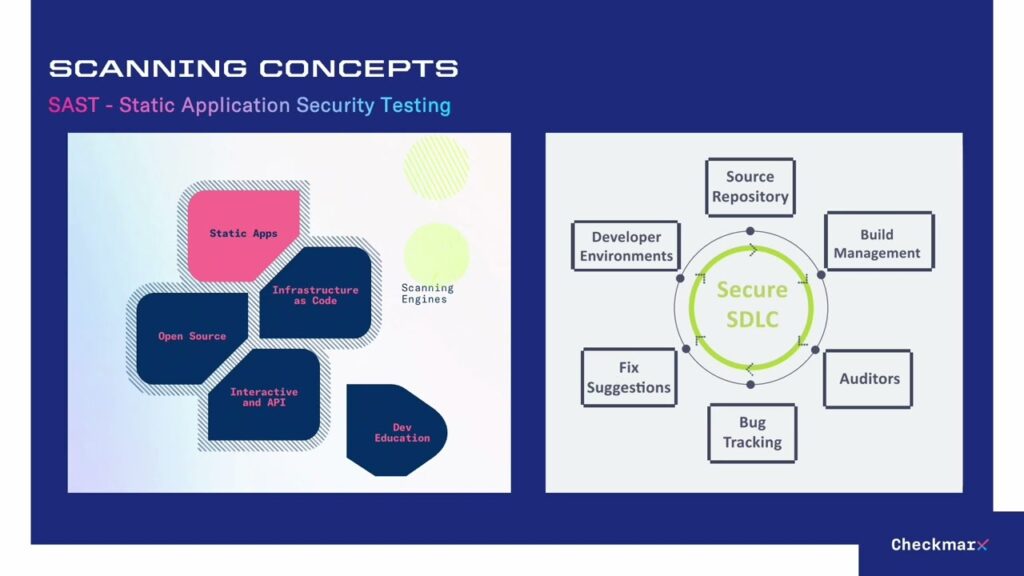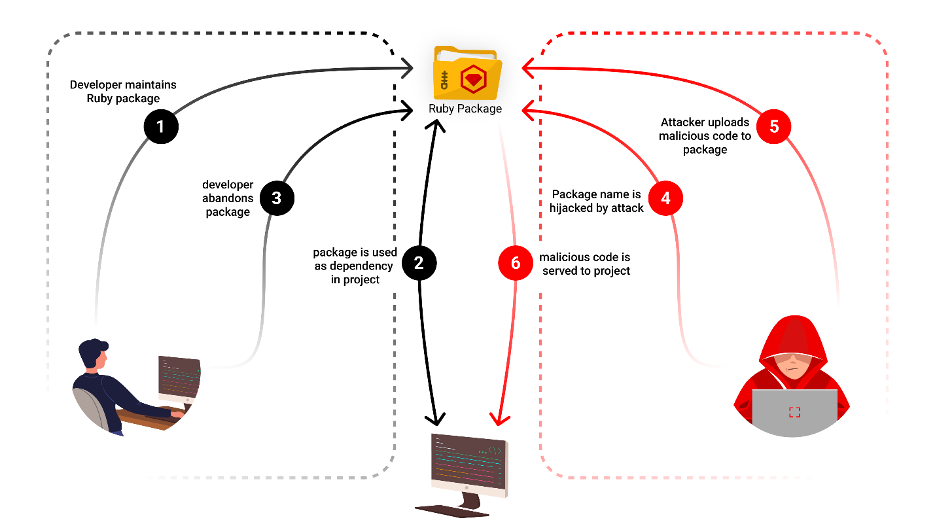
Source Code Analysis, also known as Static Application Security Testing (SAST), is a form of application testing that involves scanning an application’s code at rest.
Using this approach, developers and security teams can uncover a variety of issues such as the OWASP Top 10, like code injection risks and potential buffer overflow vulnerabilities, to name just a few security problems that Static Code Analysis can help to reveal.
While Static Code Analysis alone won’t uncover all of the potential security risks, it is one critical source of visibility into security issues that could be lurking inside applications. Keep reading for a detailed look at why Static Code Analysis is important, how it works, and how to choose the right Static Code Analysis solution.
What is Static Code Analysis?
Static Code Analysis, or Static Application Security Testing (SAST), scans “static” application code to detect risks. In this context, “static” means code that is not running. This makes SAST distinct from other forms of testing, like DAST, which requires executing an application in order to test it.

In many cases, Static Code Analysis tools scan source code. However, you can also perform Static Code Analysis on byte code or binary code.
The main goal of static source code analysis is to identify potential security vulnerabilities and flaws within an application’s source code that could lead to a security breach.
Application security and DevOps teams use this approach in the software development process to prevent security issues from being introduced in the first place.
SAST is a vital part of the software development life cycle. Adding it into an SDLC ensures that the code that’s developed is as secure as possible, resulting in better applications and easier compliance with code standards.
Note that this type of analysis is distinct from Software Composition Analysis (SCA), which examines open-source dependencies and third-party libraries.
SAST, on the other hand, focuses on the proprietary source code, bytecode, or binary code of the application itself.
The importance of Static Code Analysis
Static Code Analysis is important because it’s the primary means of detecting security risks that originate within an application’s source code.
For example, if a developer writes code that allows an application to accept input but forgets to add logic to validate and sanitize the input, it might result in a code injection vulnerability (meaning threat actors can manipulate the application by injecting malicious input). A SAST scanning tool could identify this risk by analyzing how the application accepts input and flagging code where input is not handled properly.

Likewise, application code that fails to manage memory properly could open the door to buffer overflow attacks (in which attackers write data to memory that the application is not supposed to access as a means of compromising applications or the systems hosting them). Static Code Analysis tools that analyze the way an application is designed to manage memory could detect this risk.
Note, too, that while developers typically strive to avoid introducing security flaws like these into their applications, they don’t always succeed. With increasing demands on software development output and shorter deadlines, it’s easy for developers to make mistakes, even if they take security seriously. Static Code Analysis helps to identify security oversights made by developers so that development teams can fix the issues before deploying insecure code into production.
Static Code Analysis vs. SCA and SAST
It’s important to note that SAST alone is not sufficient for detecting all security risks.
There are many other types of risks that don’t stem from the logic inside an application itself. For example, attackers could exploit vulnerabilities in open-source libraries or other dependencies that an application uses – which is why it’s important to Shift Everywhere and scan across the entire SDLC, from code to deployment. One important step is to perform Software Composition Analysis to detect open source risks. SAST tools generally don’t catch this type of issue because they focus on an application’s source code or binaries, not its dependencies.
Likewise, some risks may not be evident through analysis of static code. They might only become detectable when an application is actually running. For that reason, it’s important to deploy DAST tools, which simulate malicious interactions with a live application to detect risks.
But because Static Code Analysis is a core means of catching risks that emerge from an application’s own code, it’s one pillar of modern application security.
How does Static Code Analysis work?
Typically, Static Code Analysis works by deploying a tool that automatically sorts through thousands of lines of code in a few minutes. As it does this, the scanner looks for coding patterns associated with security risks. It then flags the risks to alert developers and security teams about them.
In addition to finding security flaws, some Static Code Analysis tools can automatically generate remediation guidance – meaning code that developers can use to correct the security flaws. This guidance helps teams fix issues faster and with less effort.
Some modern SAST tools can also be integrated into IDEs (Integrated Development Environments) for real-time, incremental scanning as developers write code using AI Secure Coding Assistants. This supports shift-left security—catching vulnerabilities as early as possible in the development cycle
Step 1: Make Use of Presets and Frameworks
Presets, also sometimes called rulesets, are pre-defined groups of rules that application security teams can apply to their scans.
Presets can be designed to meet regulatory compliance requirements or be based on the type of code being scanned.
These pre-defined rules help application security teams move faster in their testing because they don’t have to write net-new rules for testing.
Presets are designed to support major use cases such as regulatory compliance with standards like HIPAA, PCI DSS, and FISMA, as well as meeting the standards of OWASP Top 10, OWASP Top 10 API, and CWE Top 25. Presets determine what is going to be scanned and can also have an impact on noise – presets that test most find more, whereas targeted presets find less. Using these presets, in addition to presets focused on specific development types like mobile applications or web applications, ensures that AppSec teams move faster in their application testing. These predefined queries mean that testers don’t have to write new rulesets for testing.
Checkmarx One
Tailored Presets and Custom Queries
Learn how to run scans that tackle the issues that matter and allow you to prioritize so workflow is not impacted.
Discover morePresets and frameworks can be used in multiple ways, such as when security teams want to scan deeply to uncover all the high, medium, and low vulnerabilities in a mission-critical application or if they want to scan widely to only surface the most critical weaknesses in an application. Ultimately, the point of presets and frameworks is to speed up application security scans and make SAST more efficient. Using presets and security frameworks can also reduce false positives and false negatives by providing guidance about what to look for in the code scan.
Step 2: Integrate SAST Into the Development Pipeline
Application security testing needs to be tightly woven into the software development lifecycle to derive the most value. Tying SAST into the development workflow and executing it regularly ensures that organizations can identify potential vulnerabilities early.
This includes scanning uncompiled code directly from repositories and integrating with IDEs to make it easier to run application testing. The key point here is to make it easy for developers to run SAST scans.
The developer experience should be paramount here. If AppSec teams can help developers prioritize vulnerabilities based on business impact, meet Devs where they live, and equip them with the right tools and knowledge, then applications will become more secure.
7 Best Practices for Appsec Developer Adoption
Get 7 actionable tips to overcome developer trust deficit and drive developer security adoption in our eBook.
Step 3: Triage Static Source Code Analysis Results
Depending on the depth or breadth of the SAST scan, it’s possible for there to be a high number of results. Not every vulnerability will have the same impact on the security of the application, and it’s vital for application security teams to have a process in place for analyzing and triaging the SAST scan results.
Building a process for easily analyzing the output of a SAST scan helps security teams identify the most impactful application weaknesses. Part of this also involves using the right preset or framework in the scan to identify vulnerabilities based on the specific goals of the scan. Analyzing and triaging these results effectively means that developers can find and fix the most significant weaknesses in the application.
Step 4: Remediate Vulnerabilities ASAP
Security vulnerabilities need to be remediated as quickly as possible once they’re discovered. After the results of the SAST scan are analyzed and triaged, developers should begin their work on resolving the most severe issues in the application just like they would with any bug. The best-case scenario here is if there is a best-fix location that makes multiple vulnerabilities disappear at the same time.
The best SAST solutions will offer remediation guidance to developers that includes identifying any possible best-fix location. Being able to find and remediate weaknesses quickly ensures efficiency and a more secure application.
Checkmarx SAST
Vulnerabilities Prioritization Directly in IDE
See how Checkmarx integrates with your IDE of choice and allows viewing the results of SAST scans, prioritizing them and being able to act upon them quickly.
More in SASTIf the SAST solution is part of a unified application security platform, that will provide even more value. A complete platform should provide a unified dashboard for application testing platforms such as SAST, software composition analysis, SCS, API security, DAST, IaC security, and Container security.
How To Choose The Right SAST Tool
As noted above, there are different ways to examine non-running code. Perhaps the most basic is using regular expressions. These text strings look for patterns in lines of code to find flaws and potential points of exploit.
One of the issues with using regex is that it is extremely slow as it searches through combinations of patterns for exact matches and misses many critical vulnerabilities. It’s pretty basic, but it’s better than nothing. It also does not provide context for the weaknesses that may help developers in supplying a fix. Because it is essentially only “searching” or “grepping” lines of code, it does not provide visibility into how the code performs when in use. While using regex can find irregularities in the code, it can’t determine whether it has discovered a bona fide vulnerability that requires attention. These are some of the many reasons regex testing should be just one part of a multi-faceted approach to analysis.
Data Flow Analysis
Data Flow Analysis is a much more resource-intensive method than regex. It is a deep and thorough examination of not just the code itself, but the way code works. Data flow analysis tracks how data flows through the application, from when it is input by the user to the point where it is passed through different statements or blocks of code to affect the data, and finally to the output. Used along with rules, this helps to spot injection and encoding problems (like XXS) and can assist in verifying that privacy requirements are being enforced.
Control Flow Analysis
Control Flow Analysis goes beyond the code itself to inspect the operational sequences involved. For instance, authentication may be required before a user can access a certain service or function. Some of the operations that control flow analysis covers include opening and closing resources, validating session IDs, and ensuring secure cookies.
Checkmarx Static Application Security Testing uses all three methods to provide fast and accurate incremental or full scans needed to secure applications. It allows users to fine-tune their AppSec solutions to boost the accuracy of alerts so that it builds developer trust.
Other considerations for choosing a Static Code Analysis tool
Additional questions to ask when comparing SAST tools include:
- What languages are covered? Not every application security testing tool is able to analyze every programming language. Make sure that any SAST solution in consideration can analyze the languages important to your business – such as C, C#, Java, and C++, to name just a few popular languages.
- Does it support your source code manager? Developers use source code managers – such as GitHub, Bitbucket, and Git – to keep track of source code. These systems typically don’t provide built-in Static Code Analysis features. But by choosing a tool that’s compatible with your source code manager, you can automatically integrate with your source and perform static analysis automatically.
- Which groups does the group support well? Some SAST tools target varying groups of users, such as developers (for example, with seamless integrations into the SDLC and developer training), application security (for example, with flexible scanning to scan deep and wide, and security correlation and prioritization), and CISOs (for example, with reporting, correlation, and compliance support). When choosing a SAST tool, it’s important to make sure your entire organization and all relevant stakeholders are needed.
[ebook] Top 10 SAST Tool Considerations
Discover the 10 most important things when choosing an enterprise SAST solution in 2024
SAST’s critical role in modern AppSec
SAST properly deployed is incredibly beneficial to AppSec and development teams. It makes for more secure code and ensures that applications are protected against severe vulnerabilities that could open up the application to breach risk or compliance violations. Organizations would do well to follow the five steps outlined above to streamline their processes and ensure that they get the most out of static application security testing.
Checkmarx offers some of the most user-friendly and impactful SAST on the market today. See Checkmarx SAST in action by watching this short video on SAST source code scanning.

